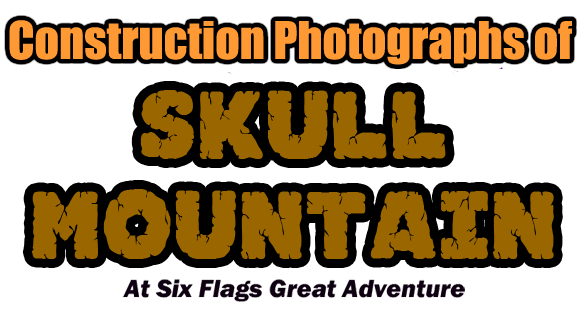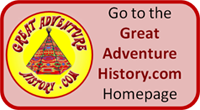
|
|
|
 |
| |
|
|
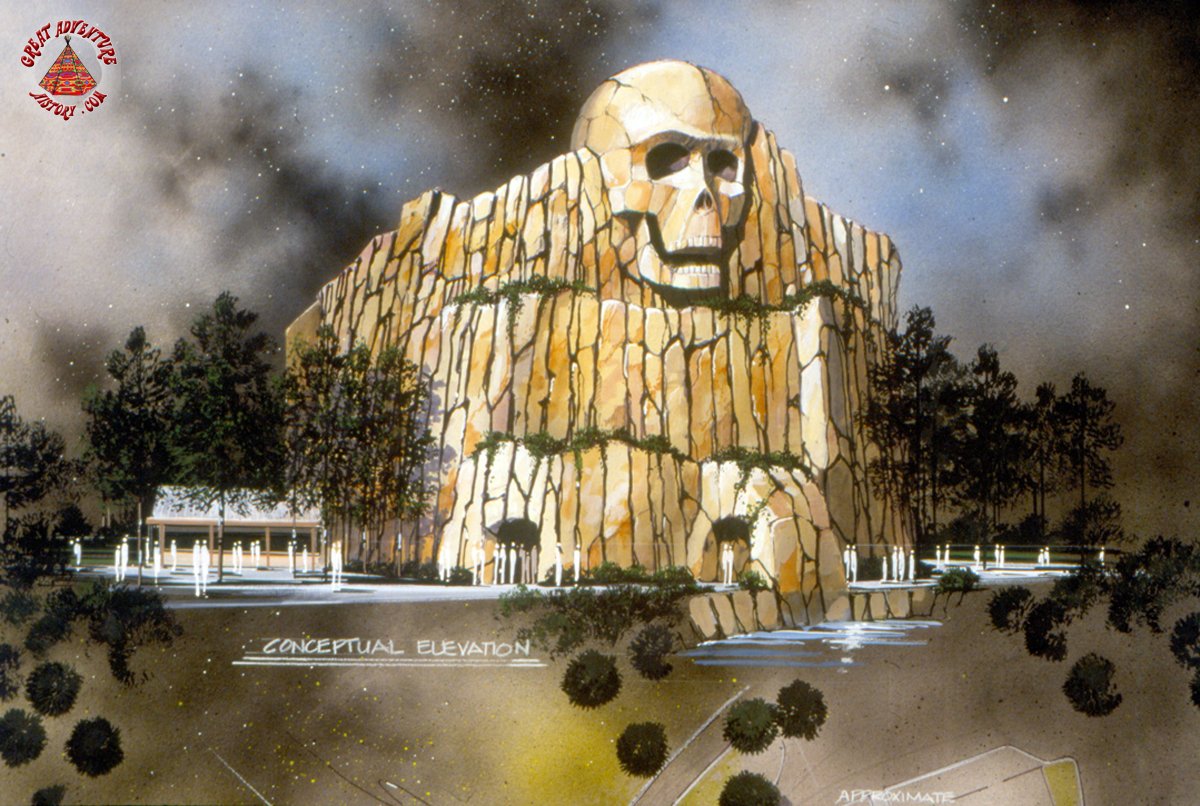 |
After several years of announcing its new attraction during the prior
season, Great Adventure held off sharing exactly what they were
preparing for when construction walls went up at the end of the 1995
season. It was obvious something big was planned, but details were
scarce. Although a large indoor coaster was in the works, the
exact theming had not yet been confirmed. It is believed that the
ride which would become Skull Mountain was initially planned as an
attraction themed to the Warner Bros movie Gremlins. For
whatever reason, changes were made and the movie tie-in was dropped.
|
| |
|
|
Instead, the theme of the new roller coaster took on a scary exploration
theme with guests traveling in expedition trains through a unique shape
mountain dig site.
Concept art and initial planning shows the elaborate facade of Skull
Mountain and complementary waterfall to the neighboring Adventure Rivers
and Lakefront areas.
The new ride would be a fully-immersive experience, where the roller
coaster was contained within the caverns and tunnels of a foreboding
mountain. |
 |
| |
|
|
 |
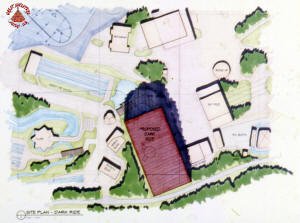 |
| |
 |
| |
|
|
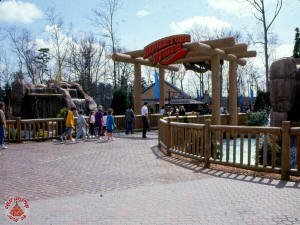 |
Blueprints show that this new attraction would take the location of the
Rotor ride (known then as the Typhoon), prompting the second and final
relocation of this attraction in its time at the park.
As the summer season of 1995 came to a close, construction fences sprang
up and extended from the Adventure Rivers portal to the remote control
boats (former site of Condor), enclosing the land within its perimeter.
|
 |
| |
|
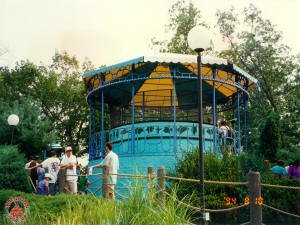 |
 |
| |
|
|
 |
 |
 |
| |
|
|
 |
Site preparation started with the disassembly of the Rotor ride for
later reassembly in Frontier Adventures as the Taz Twister.
Further land clearing saw the removal of the man-made hill on
which the Rotor sat and the surrounding trees and plants. Though within
the construction fences, the Red River Taco Restaurant (currently site
of Panda
Express) would remain untouched during site clearing.
|
 |
| |
|
 |
 |
| |
|
|
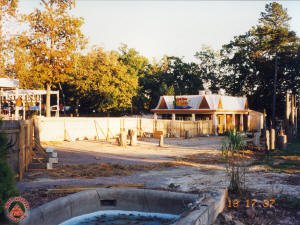 |
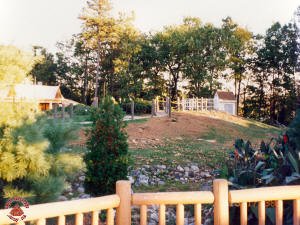 |
 |
| |
|
|
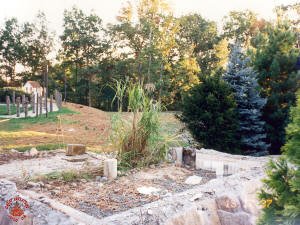 |
 |
 |
| |
|
|
 |
 |
 |
| |
|
|
 |
 |
 |
| |
|
|
 |
 |
 |
| |
|
|
 |
 |
 |
| |
|
|
 |
Construction crews persisted through the winter weather as land clearing
had concluded. During this time, concrete foundation was poured and
beams went up to form the metal building which would encase the coaster.
By
the end of 1995, the first segments of the huge building that would
house Skull Mountain were erected forever changing the skyline of this
quiet section of the park.
|
 |
| |
|
 |
 |
| |
|
|
 |
 |
 |
| |
|
|
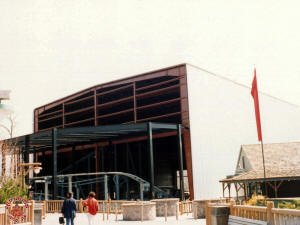 |
By springtime, the roller coaster would begin assembly before additional
building features could be added to complement the ride path.
The two lift hills were assembled and followed by the twisted helixes
throughout the ride. Corresponding platforms on the building were added
to create additional tunnel effects along the lift hill section that
would have windows to the outside.
|
 |
| |
|
 |
 |
| |
|
|
 |
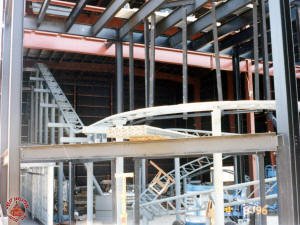 |
 |
| |
|
|
 |
Soon, more framework for the building began to take shape as the upper
reservoir for the waterfall was assembled. In addition, beams were
constructed under
the track as a base for the floors of the mountain caverns.
|
 |
| |
|
|
 |
 |
 |
| |
|
|
 |
 |
 |
| |
|
|
 |
 |
 |
| |
|
|
 |
 |
 |
| |
|
|
 |
 |
 |
| |
|
|
 |
 |
 |
| |
|
 |
 |
| |
|
|
 |
 |
 |
| |
|
|
 |
 |
 |
| |
|
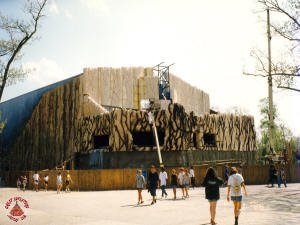 |
 |
| |
|
|
 |
As the 1996 season began, Skull Mountain was not nearly ready for
opening. Signs around the construction fence illustrated the concept art and a
tentative opening of June of that year while the basic layers of rocky
exterior began to take shape.
Additional building features were completed around this time, with the
exit cavern being placed in the outskirts of Adventure Rivers next to
the Riverís Edge Trading Post (now Wild Things which sits shuttered enclosed
by claw machine games). The rocks were painted to give a more weathered look,
with the building receiving an artistic mural which gave the illusion that the
mountain was placed against a foggy and cloudy sky.
|
 |
| |
|
 |
 |
| |
|
|
 |
 |
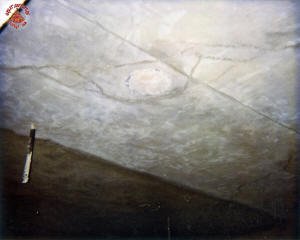 |
| |
|
|
 |
 |
 |
| |
|
|
 |
 |
 |
| |
|
|
 |
 |
 |
| |
|
|
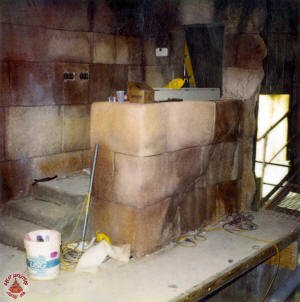 |
The interior queue and main station would be given similar rock facades.
Sheetrock and styrofoam were used to create the look of a cavern and
abandoned temple station. The look of an excavation shaft was captured by
wood frames placed throughout the cave.
|
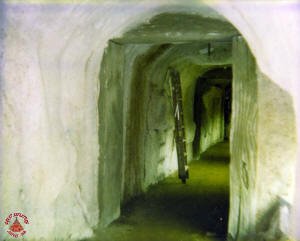 |
| |
|
|
 |
 |
 |
| |
|
|
 |
 |
 |
| |
|
 |
 |
| |
|
|
 |
 |
 |
| |
|
|
 |
As the roller coaster itself was completed and fully tracked, the
interior and exterior were fully painted in time for the arrival of the
rideís three trains.
|
 |
| |
|
|
| |
|
|
 |
 |
 |
| |
|
|
 |
 |
 |
| |
|
|
| |
|
|
 |
Construction of the outer queue surrounding Red River Taco in the
Lakefront would delay the opening further, but allowed for the
refinement of details around the building.
After being outfitted with a 3D ride logo sign, Skull Mountain was ready
for exploration and opened to the public with a ceremony on June 3,
1996.
|
 |
| |
|
 |
 |
| |
|
|
 |
 |
 |
|
|
|
|
|
Original Spotlight: October 14, 2018. GAH Reference #:
RIDE-1996-001C. |
|
|
|
|
 |
|
|
|
|
 |

UPDATED SPOTLIGHT COMING SOON |
 |
